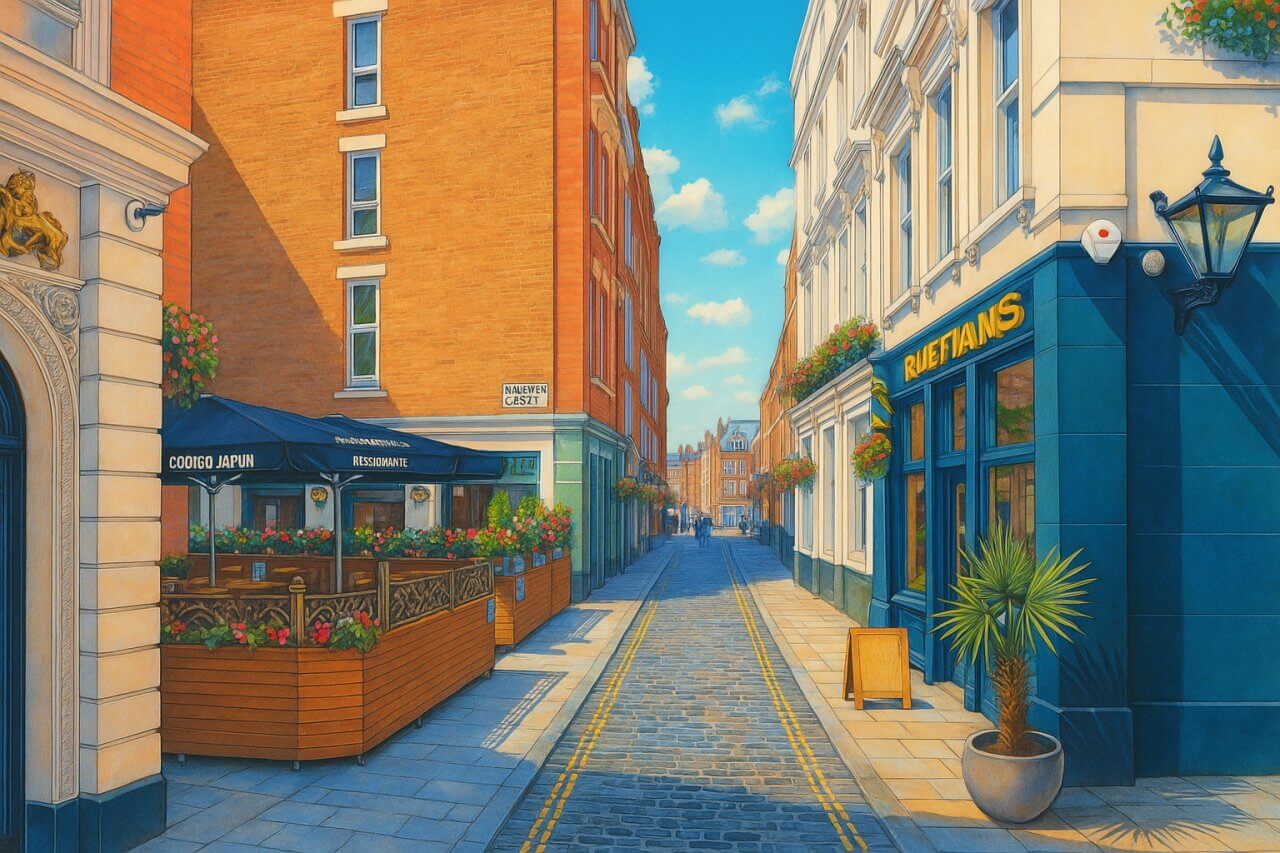
Maiden Lane, London
Maiden Lane is a narrow but historically significant street situated in the heart of the City of Westminster, part of the famed West End of London. Stretching just a short distance between Bedford Street to the west and Southampton Street to the east, Maiden Lane today is a blend of historical resonance and contemporary charm, nestled just steps from the bustling Covent Garden Piazza.
Street Layout and Surroundings
Maiden Lane runs parallel to the southern edge of the Covent Garden area, sitting just south of Chandos Place and north of Henrietta Street. Though modest in length, the street is well-trafficked on foot due to its proximity to Covent Garden Market and the vibrant theatre scene. At the western end, it intersects with Bedford Street, while at the eastern edge it meets Southampton Street, placing it just a block from the River Thames to the south.
The atmosphere here feels intimate and steeped in history. The buildings are a mixture of preserved Georgian and Victorian façades with ground-level shops, restaurants, and cafes. With its relatively quiet character compared to nearby main roads, Maiden Lane offers a calm interlude in the busy Covent Garden district.
Historical Background
Maiden Lane dates back to the early 17th century, having appeared on maps of London as early as the 1630s. It was laid out during the expansion of the Covent Garden estate, itself developed from what had been the walled garden of the Bedford estate. As the Covent Garden area became increasingly urbanised, Maiden Lane became part of a grid of new streets intended to serve the growing population and economy of the capital.
The name "Maiden Lane" is believed to derive from the word "maiden" in the sense of “unmarried woman,” though some etymologists suggest it may have older, possibly religious or mythological connotations. The pronunciation is straightforward in English: May-d'n Lane, phonetically transcribed as /ˈmeɪdən leɪn/.
Notable Buildings and Landmarks
Though small, Maiden Lane has been associated with several interesting figures and moments in history. Perhaps most famously, the celebrated painter J. M. W. Turner was born above his father’s barber shop at number 21 Maiden Lane in 1775. The building has long since changed function, but a plaque commemorates his birth there.
Nearby, visitors will find the historic Adelphi Theatre just to the south, and the Vaudeville Theatre to the west. Within a few steps from Maiden Lane is the Covent Garden Piazza, home to street performers, the London Transport Museum, and the iconic Apple Market.
Residential and Property Market
Real estate in and around Maiden Lane is in high demand due to its central location. Properties here are typically compact, with many residential units occupying the upper floors above commercial premises. As of mid-2025, flats in the area range between 450–750 sq ft (42–70 sq m).
Prices for such flats typically begin at around £950,000 for smaller units and can exceed £1.5 million for renovated, top-floor apartments with views. Rental costs are similarly high, averaging £3,200 per month for a one-bedroom flat and upwards of £4,800 per month for a two-bedroom unit, depending on finish and floor level. These figures place Maiden Lane well above the average London property price.
Transport Connections
Nearest Underground Stations
Maiden Lane enjoys excellent access to the London Underground network. The closest stations include:
- Covent Garden Station (Piccadilly line) – approximately a 3-minute walk north.
- Charing Cross Station (Bakerloo and Northern lines) – around a 6-minute walk southwest.
- Embankment Station (District, Circle, Northern, and Bakerloo lines) – about 8 minutes’ walk south.
These stations are part of the wider London Underground Stations network and offer quick links to nearly every part of central and Greater London.
Nearby Bus Stops
Several Transport for London (TfL) bus routes pass through or near the Covent Garden area. The closest stops are on Strand, Southampton Street, and Bedford Street. Key routes include:
- Route 6 (Aldwych to Willesden)
- Route 11 (Liverpool Street to Fulham Broadway)
- Route 23 (Aldwych to Westbourne Park)
These routes make it easy to reach Maiden Lane by public transport from nearly any corner of the city.
Fun Fact
Maiden Lane is one of only two streets in the UK to have hosted a home birth for two of Britain’s greatest artists. Besides J. M. W. Turner, the dramatist Richard Brinsley Sheridan is also believed to have spent time living on or near the lane during his early London years.
Quick Facts
- Location: City of Westminster, London
- Connects: Bedford Street (west) and Southampton Street (east)
- Nearest Underground Stations: Covent Garden, Charing Cross, Embankment
- Nearby Attractions: Covent Garden Piazza, Adelphi Theatre, London Transport Museum
- Historical Significance: Birthplace of painter J. M. W. Turner
- Average Property Prices (2025): £950,000–£1.5M
- Average Rental Prices: £3,200–£4,800/month
- Public Transport: Served by multiple bus routes and three Underground stations
- Pronunciation: "May-d'n Lane" /ˈmeɪdən leɪn/
Map of Maiden Lane, London
 Painting of Maiden Lane, London
Painting of Maiden Lane, London